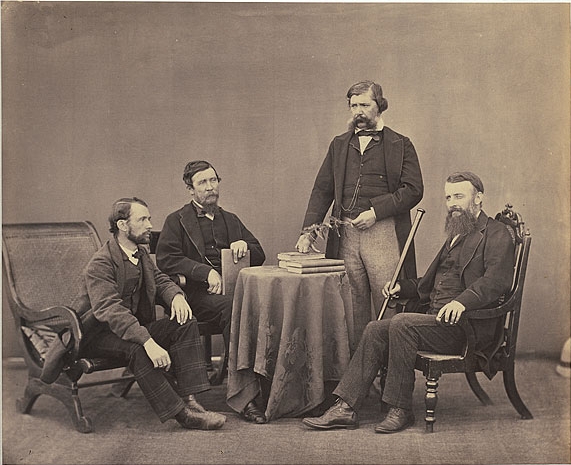Museums in India can be quite a depressing sight, although this was evidently not so in the past. One of the elements they lack is active interpretation apart from signs of care or even good accompanying information. Most visitors walk through and out without a sign of enlightenment. One of the pioneers behind museums in India, at least the ones in Madras and Bangalore, is a little-known Dr. Edward Green Balfour. A surgeon in the East India Company and a product of the Scottish Enlightenment, he wrote on a range of subjects - the environment, forests, water, disease, climate, public health, public education. He knew Hindi and Persian, published reprints of poetry, translated medical treatises into Indian languages and compiled an encyclopaedia on India (more on that in an older note). A cousin of A. O. Hume, a nephew of the radical Joseph Hume, he often held anti-Colonial views. Highly respected in Madras, he was given a special farewell when he left India. Balfour Road in Madras is possibly named after him, although I am unable to find reliable evidence for it since there were several other Balfours in India.
 |
| Old notice with "free admission" erased |
The only picture of Edward Balfour is an old painting in the Madras Museum. A friend in Edinburgh who has been interested in the life of Balfour once visited the museum to obtain a photograph of this painting and perhaps because he asked for permission, he was denied it. Museums, or at least the people sitting there seem to have scant regard for learned or interested visitors. It is interesting that this dog-in-the-manger attitude of personnel in India was recognized even when Balfour founded the museum. Balfour "crowd-sourced" the exhibits in the museum, and because the collections were obtained from the public he even considered it unethical to charge visitors to the museum. An old notice, now defaced, provides insights into the antiquity of this attitude.
In 1992, environmental historian Richard Grove wrote an article in the Scientific American on the "Origins of Western environmentalism" (Scientific American 267 (1): 42–47) in which he pointed out the roles of Balfour, Jerdon, Cleghorn and others - all Scots - in warning the government of the impacts of deforestation on water supplies, leading to famine. The article was accompanied by a photograph that he identified as being of the members of the Madras Literary Society with Balfour, Jerdon and Cleghorn in it. In 2011 (Noltie, 2011), the identity of the people in the photograph was clarified and the standing figure was discovered to be not Balfour but William Jameson.
 | |||
| L to R: John Lindsay Steward, Thomas Caverhill Jerdon, William Jameson and Hugh Francis Cleghorn in 1864 Courtesy: National Gallery of Australia |
A visit to Chennai, allowed me to make a quick trip to the Madras Museum. It was apparently World Women's Day and there were special banners. Expecting that they would have noted Edward Balfour's efforts in the education of women and his efforts to improve healthcare and education of women was a complete mistake. There was nothing of that sort, however the one painting of his stood at the entrance of a gallery. The front of the frame was covered in glass and the lighting was dismal. Fortunately the guards there did not come in the way of my photography. Taking pictures from several different angles so as to ensure that the reflections of the lights did not fall on the same part of the oil painting by William Saunders Barnard, I left with the hope that I could digitally remove the reflected-light artefacts. One would have expected a minimally qualified museum would take up the task of digitally archiving all their holdings and making them publicly available. After all museums are for everyone, and that was how the founder saw them.
Getting back and working with GIMP and its perspective correction tool allowed me to create a mosaic of the good parts. The result is that Wikipedia and the world now can see the one picture of Edward Balfour.
 |
| Images taken at three angles |
 |
| The result produced by manual stitching |
 |
| Exhibit of the Week - with a picture from Wikipedia used without credits! |
- Balfour, E.G. (1849). "Notes on the influence exercised by trees in inducing rain and preserving moisture". Madras Journal of Literature and Science 15: 402-448.
April 2012: Found Balfour's paper on trees and climate, now linked. Thanks to Simon Smart on the Wikipedia reference desk.
Further reading
- http://en.wikipedia.org/wiki/Edward_Balfour
- Noltie, H. J. 2011. A botanical group in Lahore, 1864. Archives of natural history 38(2):267–277.